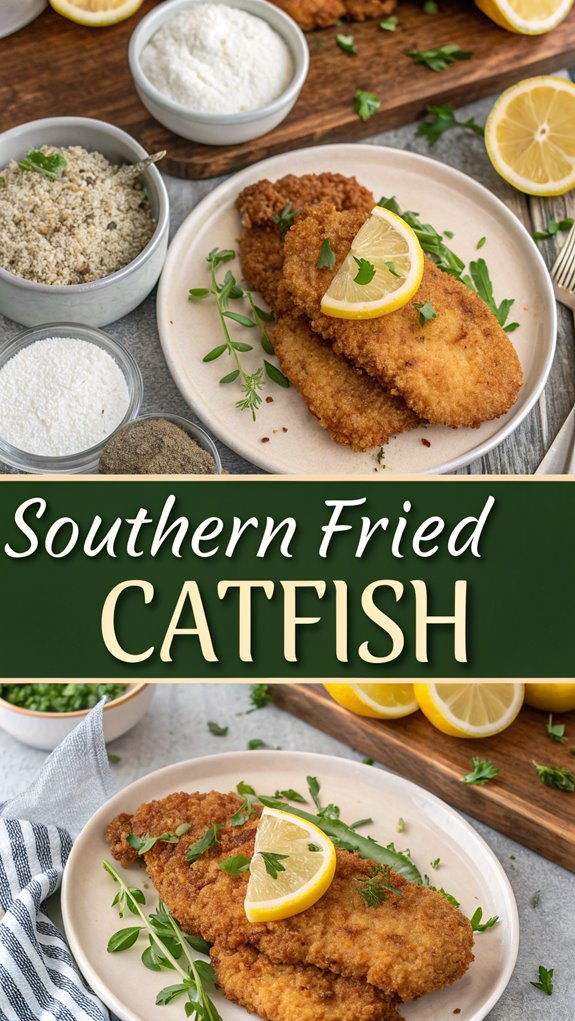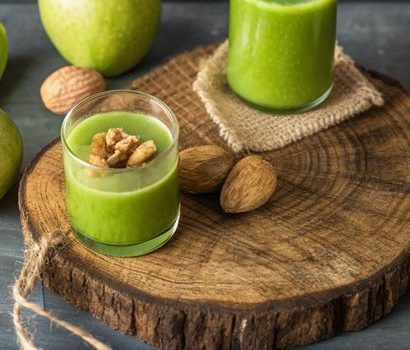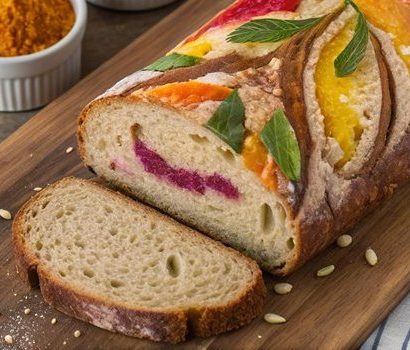Black People Food Recipes
When you explore Black people food recipes, you’re not just discovering dishes; you’re uncovering a rich cultural heritage that weaves together history, family, and resilience. Each recipe tells a story—whether it’s the soulful warmth of collard greens or the comforting embrace of cornbread. You might be surprised to find how these traditional flavors adapt and evolve in modern kitchens. There’s more to this culinary journey than meets the eye, and understanding the origins and significance behind these recipes can truly enhance your experience. What else could these beloved dishes reveal about community and identity?
Why You’ll Love This Recipe
When you immerse yourself in these soul food adaptations, you’ll discover a delightful blend of tradition and innovation that not only honors cultural roots but also promotes healthier eating.
By incorporating leaner proteins and using cooking methods like baking and searing, you can enjoy classic dishes with less fat. Emphasizing vegetables and whole grains adds nutrition without sacrificing flavor. Research indicates that disproportionate rates of type 2 diabetes are often linked to dietary habits, highlighting the importance of these adaptations.
You might even try plant-based alternatives, allowing you to experience familiar tastes in a healthier way. Spices and herbs can enhance your meals, so you won’t rely on fat or salt.
With these adaptations, you’re not just enjoying comfort food; you’re also taking steps toward better health while celebrating the rich culture that soul food represents.
History
Exploring the rich history of African American cuisine reveals how deeply intertwined it’s with the broader narrative of American food culture.
African crops, like okra and black-eyed peas, were brought to America during the transatlantic slave trade. Enslaved African chefs introduced their native dishes to plantation owners, shaping Southern cuisine. Traditional meals like gumbo and jambalaya became staples. Enslaved cooks integrated diverse culinary traditions into their cooking, which further enriched regional flavors.
During slavery, cooks often prepared multiple meals daily, using simple tools like earthenware pots. After emancipation, these culinary practices evolved into soul food, embracing dishes like collard greens and cornbread.
The legacy of African American cuisine blends African, European, and Native American influences, preserving cultural traditions while greatly impacting America’s food identity.
Recipe

Recipe: Southern Fried Catfish
Fried catfish is a quintessential Southern dish that has won the hearts of many with its crispy exterior and tender, flaky interior. This dish is often served with a side of coleslaw and hot sauce, making it a perfect meal for gatherings, family dinners, or casual weeknight meals. The secret to achieving that perfect crunch lies in the seasoning and the frying technique, guaranteeing that each bite is a delightful experience. Soul food, which emphasizes community gatherings, celebrates the joy of sharing meals with loved ones.
As you prepare to cook this dish, remember that the quality of your catfish fillets makes a significant difference in the final result. Fresh catfish, if available, is ideal, but frozen fillets work just as well. Pair your fried catfish with traditional sides like cornbread and collard greens to create a truly Southern feast that embodies comfort and flavor.
Ingredients:
– 4 catfish fillets
– 1 cup buttermilk
– 1 cup cornmeal
– 1/2 cup all-purpose flour
– 1 teaspoon garlic powder
– 1 teaspoon onion powder
– 1 teaspoon paprika
– Salt and pepper to taste
– Vegetable oil for frying
– Hot sauce (optional, for serving)
Cooking Instructions:
- Begin by marinating the catfish fillets in buttermilk for at least 30 minutes to enhance the flavor and tenderness.
- In a separate bowl, combine cornmeal, flour, garlic powder, onion powder, paprika, salt, and pepper. Mix thoroughly to guarantee an even distribution of the spices.
- Heat about 1 inch of vegetable oil in a large skillet over medium-high heat until it reaches 350°F (175°C). You can test the oil by dropping a small amount of the cornmeal mixture into it; if it sizzles, the oil is ready.
- Remove the catfish fillets from the buttermilk, allowing any excess to drip off. Dredge each fillet in the cornmeal mixture, ensuring they’re fully coated.
- Carefully place the coated fillets into the hot oil, cooking them in batches to avoid overcrowding. Fry each side for about 3-4 minutes or until golden brown and crispy.
- Once cooked, remove the fillets and place them on a plate lined with paper towels to drain any excess oil.
Extra Tips:
When frying catfish, maintaining the right oil temperature is essential to achieving that perfect golden crust without overcooking the fish. If you notice the oil is too hot and the fish is browning too quickly, lower the heat as needed.
Additionally, serve the catfish immediately for the best texture, and don’t forget the hot sauce for an extra kick!
Final Thoughts
As you reflect on the rich culinary traditions of Black American cuisine, it’s clear that dishes like Southern fried catfish are more than just meals; they represent a deep cultural heritage.
These recipes tell stories of resilience, family, and community. You’ll find that soul food often includes ingredients like okra and black-eyed peas, highlighting the blend of African, Native American, and European influences.
Remember, the cooking techniques used—boiling, frying, and roasting—are rooted in history and passed down through generations, a reflection of cooking techniques from Western and west-central Africa.
Celebrating dishes during holidays reinforces cultural identity and connects you to your ancestors. By preparing and sharing these meals, you’re honoring that legacy and fostering a sense of togetherness in your own family.
Embrace the flavors and significance of this vibrant cuisine.
FAQ
Understanding the significance of Black American cuisine often raises questions about its history, ingredients, and preparation methods. Many ask about the origins of soul food. It heavily draws from West African traditions, with ingredients like black-eyed peas, okra, and rice brought over during the transatlantic slave trade. Common ingredients include smoked turkey, cornmeal, and various spices that enhance flavors. Additionally, soul food reflects the unique culinary practices and experiences of African Americans, showcasing the resilience and creativity of the community.
You might wonder about preparation techniques. Soaking and stewing beans is common, while frying is popular for dishes like fried chicken.
Regional variations exist, influenced by local cultures and even vegan adaptations. This cuisine not only nourished but also connected communities, making it a crucial part of African American heritage.
Embrace these recipes, and you’ll discover their rich history and flavors.

BLACK PEOPLE FOOD RECIPES
Ingredients
- Ingredients:
- - 4 catfish fillets
- - 1 cup buttermilk
- - 1 cup cornmeal
- - 1/2 cup all-purpose flour
- - 1 teaspoon garlic powder
- - 1 teaspoon onion powder
- - 1 teaspoon paprika
- - Salt and pepper to taste
- - Vegetable oil for frying
- - Hot sauce optional, for serving
Instructions
- Cooking Instructions:
- Begin by marinating the catfish fillets in buttermilk for at least 30 minutes to enhance the flavor and tenderness.
- In a separate bowl, combine cornmeal, flour, garlic powder, onion powder, paprika, salt, and pepper. Mix thoroughly to guarantee an even distribution of the spices.
- Heat about 1 inch of vegetable oil in a large skillet over medium-high heat until it reaches 350°F (175°C). You can test the oil by dropping a small amount of the cornmeal mixture into it; if it sizzles, the oil is ready.
- Remove the catfish fillets from the buttermilk, allowing any excess to drip off. Dredge each fillet in the cornmeal mixture, ensuring they're fully coated.
- Carefully place the coated fillets into the hot oil, cooking them in batches to avoid overcrowding. Fry each side for about 3-4 minutes or until golden brown and crispy.
- Once cooked, remove the fillets and place them on a plate lined with paper towels to drain any excess oil.
- Extra Tips:
- When frying catfish, maintaining the right oil temperature is essential to achieving that perfect golden crust without overcooking the fish. If you notice the oil is too hot and the fish is browning too quickly, lower the heat as needed.
- Additionally, serve the catfish immediately for the best texture, and don't forget the hot sauce for an extra kick!



